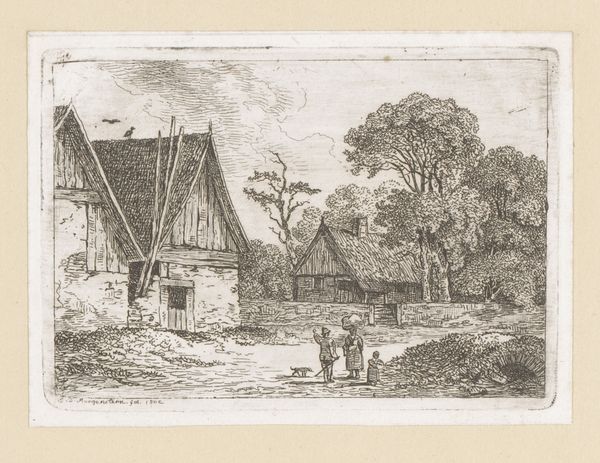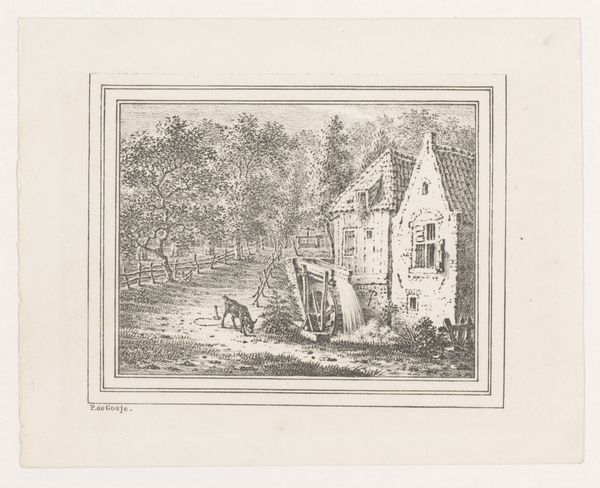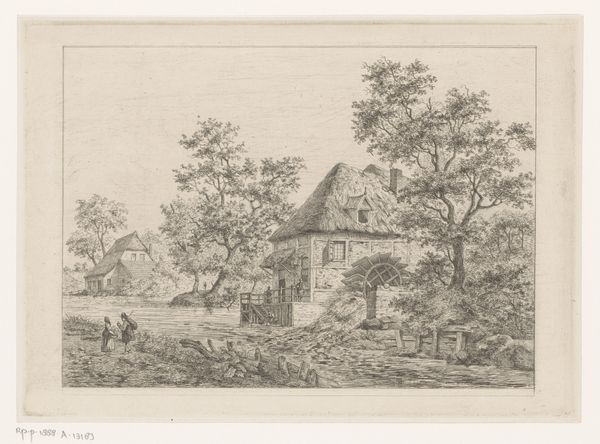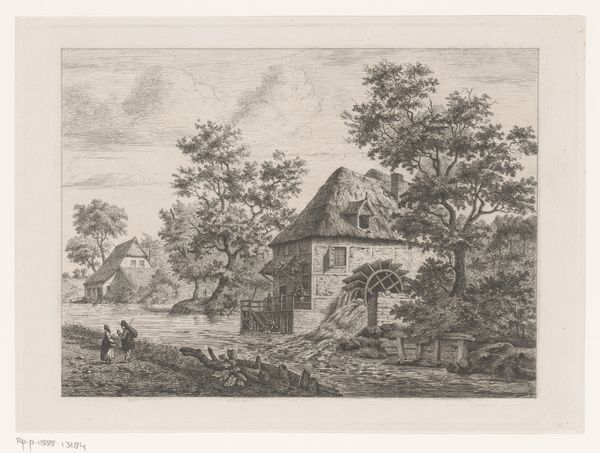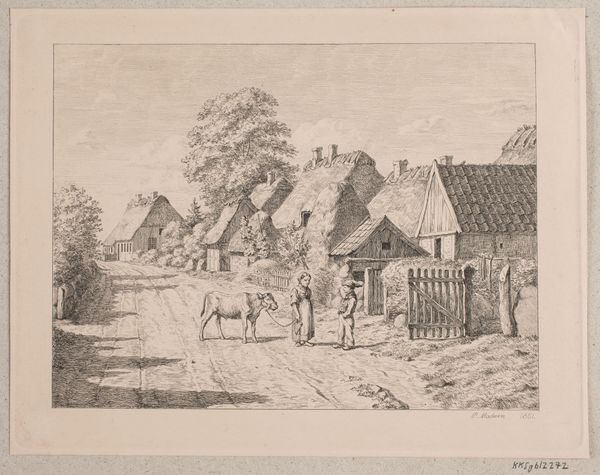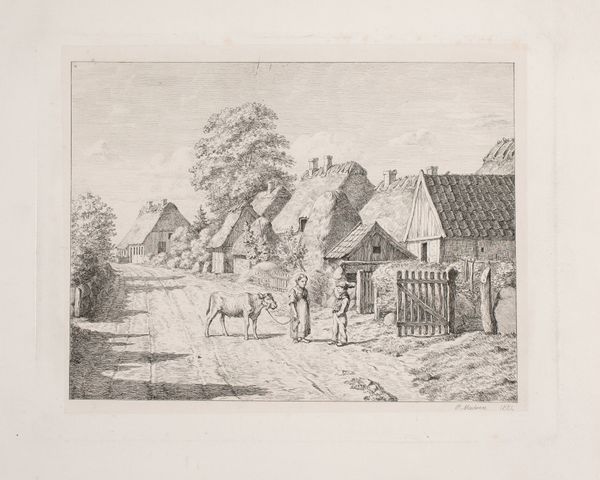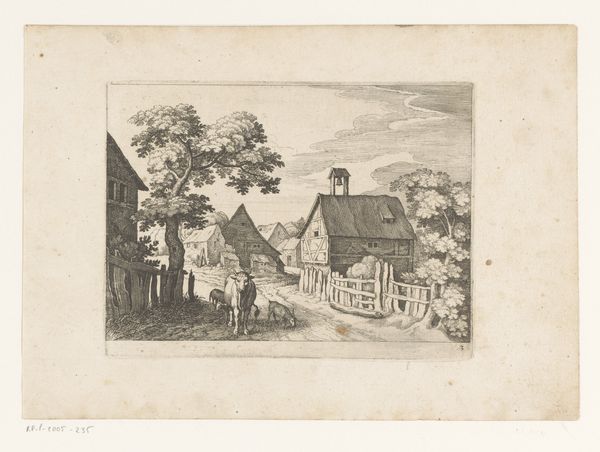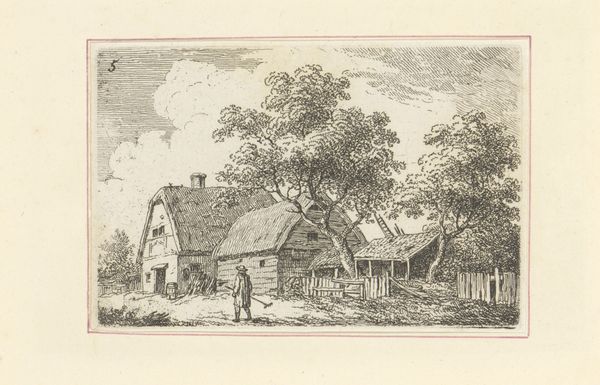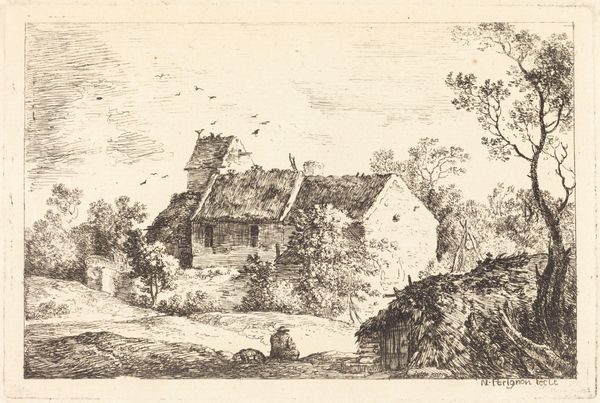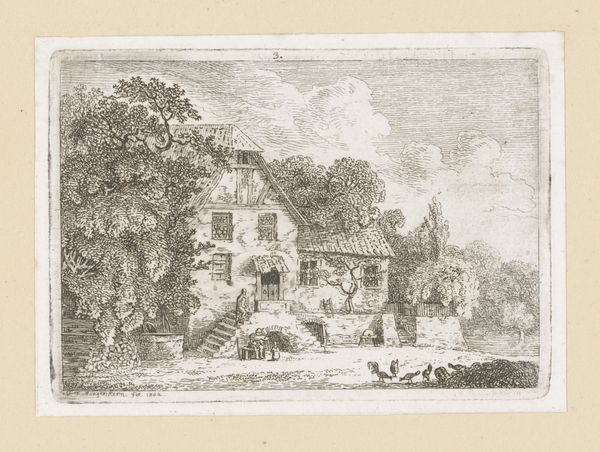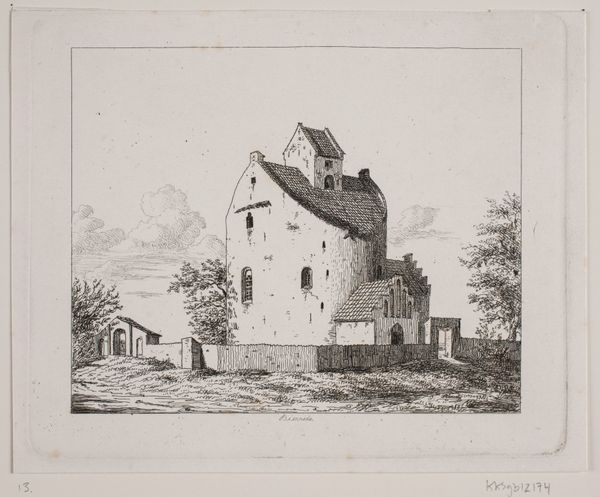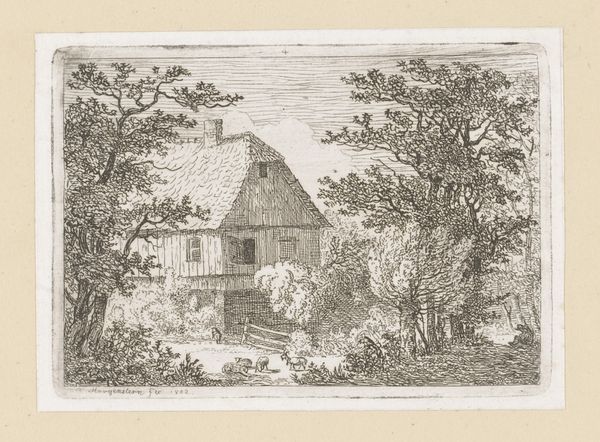
engraving
#
landscape
#
romanticism
#
engraving
#
realism
Dimensions: height 105 mm, width 132 mm
Copyright: Rijks Museum: Open Domain
Pieter de Goeje made this landscape with a watermill and grazing goat using etching, a printmaking technique, sometime around the mid-19th century. The process involves coating a metal plate with a waxy, acid-resistant substance, through which the artist scratches an image. The plate is then submerged in acid, which bites into the exposed metal, creating lines that hold ink. Notice the fineness of the lines, a testament to de Goeje’s skill. The etching process allows for detailed, delicate work, capturing the texture of the stone, the wood of the mill, and even the goat’s fur. This wasn't simply about representation; it was about the social and economic landscape of the time. Watermills were essential for grinding grain, a vital part of the food supply. By etching this scene, de Goeje wasn’t just capturing a picturesque view, but also documenting a key element of the economic and social fabric of the Dutch countryside. So, next time you look at an etching, remember it's not just about the image, but also the labor, the materials, and the social context that brought it into being.
Comments
No comments
Be the first to comment and join the conversation on the ultimate creative platform.
